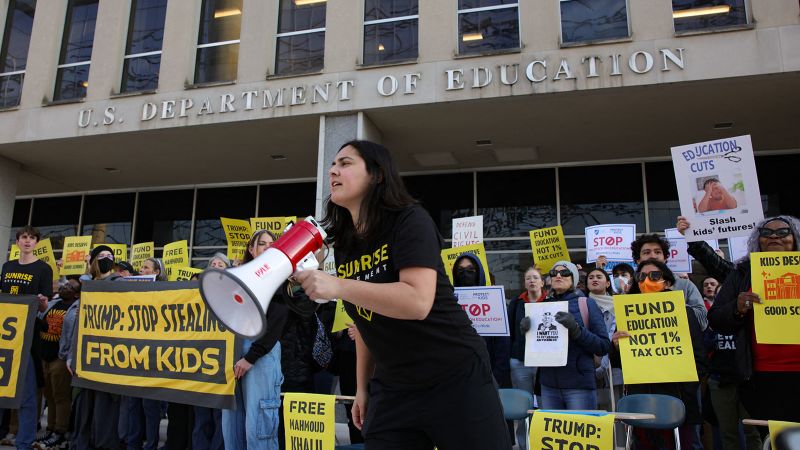CNN
—
More than 275,000 layoffs were announced last month, reaching a level not seen since the pandemic, according to a new report published Thursday.
The biggest culprit was one particular employer: The federal government.
The federal government announced plans to axe 216,215 jobs, accounting for nearly 80% of the 275,240 layoffs announcements made by US employers in March, according to Challenger Gray & Christmas’ latest report. It’s the third-highest monthly total behind April 2020 (671,129) and May 2020 (397,016).
The Department of Government Efficiency has run roughshod on the federal government, slashing funding, scrapping contracts and laying off droves of federal workers.
“Job cut announcements were dominated last month by [DOGE] plans to eliminate positions in the federal government,” Andrew Challenger, senior vice president for the global outplacement and coaching firm. “It would have otherwise been a fairly quiet month for layoffs.”
Of the remaining 59,025 cuts announced outside of the federal government, the biggest share was in technology and retail, according to the report.
The March announcements mark a stark 60% jump from February, which saw a spike of its own, and they’re up 205% from the 90,309 cuts announced in March 2024.
The DOGE-driven job cuts aren’t expected to hit the labor market data and the economy in one fell swoop. While some federal employees have been laid off immediately, others are serving out a paid notice period where they essentially quit but won’t be unemployed weeks or even months from now.
Still, DOGE’s drastic cutbacks are expected to heavily reverberate throughout local communities and the economy as a whole.
In February and March, there were 280,253 layoffs outlined for federal workers and contractors at 27 agencies, according to the report. Another 4,429 job cuts (mostly affecting health care businesses and nonprofit organizations) have occurred because of downstream effects from cutting federal aid or ending contracts, according to the report.
“Cutting (government spending) indiscriminately has no positive effect on any economy,” Gregory Daco, chief economist at EY-Parthenon, told CNN in an interview. “Doing so indiscriminately and rapidly risks having more significant spillovers to the private sector.”
“Moving fast and breaking things is a risky proposition,” he said.
Through February, the US labor market still appeared fairly solid but with cooler job growth and a slowdown in labor turnover, the “churn” that’s needed for a healthy labor market.
The US job market has remained strong and steady for years now, providing a foundation for the all-important consumer to stay afloat amid high inflation and high interest rates.
The March jobs report, scheduled for release by the Bureau of Labor Statistics on Friday morning, could provide one of the clearest pictures yet as to how the Trump administration’s sweeping policy moves on trade, immigration and its overhaul of the federal government is rippling through the broader labor market.


